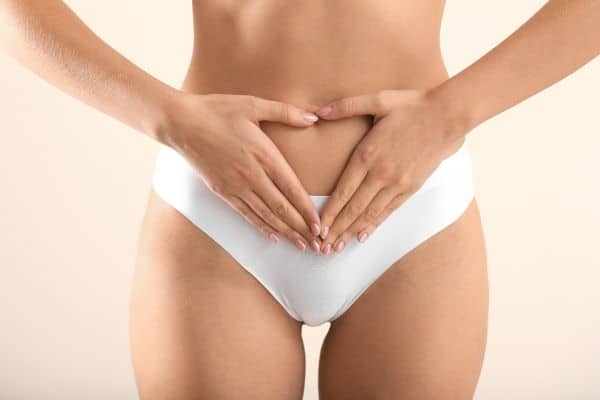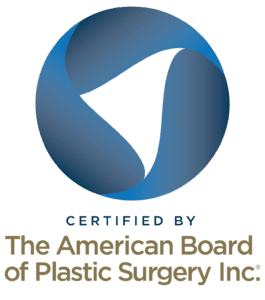
Some women struggle with an elongated labia minora after childbirth that can cause discomfort and irritation. This problem can cause the labia to be pulled and tugged, making many things difficult, such as wearing tight clothes, riding a bike, or working out.
Also, sexual intercourse can be uncomfortable with a longer labia minora, and some women are self-conscious in the bedroom because of it.
Labiaplasty can reduce the size of the labia minora, so they don’t extend below the labia majora. This surgical procedure can be performed to fix asymmetry when one part is longer than the other.
Labiaplasty also can be done so the length of both sides is the same, so it is no longer twisted or pulled. Many patients undergo labiaplasty as part of their mommy makeover.
If you are considering a labiaplasty, it’s important to have as much information as possible. Please continue reading to learn more about the procedure and labiaplasty aftercare.
Labiaplasty Procedure
The most common option is the trim procedure, where the surgeon trims away the extra tissue that hangs below the labia majora.
The other option is the wedge procedure that maintains the wrinkles edges of the labia minora by taking a pie-shaped piece of tissue out.
Both procedures usually involve the use of absorbable sutures. Learn the purpose of Labiaplasty.
Some patients have other procedures during their labiaplasties such as a breast augmentation or a tummy tuck.
Preparing For Labiaplasty Recovery
Before your labiaplasty, there are a few things you should have available and other points to remember:
- Purchase a spray bottle to use after you urinate for the first few days after surgery. This will help keep the surgical site clean.
- You will need to take several days off work as well as not exercise for a few weeks. If you can’t do these things, you may want to think about doing this surgery later.
- It helps to shave the area before having labiaplasty.
- Don’t have sex for several weeks.
If you cannot abstain from sex for this time, you shouldn’t have labiaplasty. The incisions need plenty of time to heal, and if they are stressed, you may need revision surgery.
Labiaplasty Recovery
Most patients have excellent recovery from labiaplasty. To ensure you have the best outcome, please remember to follow the advice below.
Anti-Infection

If you have a topical antibiotic, you should reapply it after every vulval or perineal wash. However, you shouldn’t apply soap to your vulva during the first few weeks of recovery.
The surgeon will probably prescribe antibiotics for five days after the labiaplasty, but others may give you antibiotics for 10 days.
You shouldn’t soak in a bathtub for several weeks because this can cause infection. Taking a daily short shower is fine.
Pat the vulva clean and dry gently, and you can use a warm water rinse every day. Apply dry, clean dressings for at least five days.
Pain Control
You will likely have mild pain after labiaplasty, so taking an anti-inflammatory drug may be appropriate. Your surgeon may prescribe pain medications for you to take for three or four days to relieve pain.
Using ice packs also can lower pain, inflammation, and excessive swelling. Also, you should only wear loose clothing for a month after the procedure, so you don’t get an infection. Tight clothing is important to avoid when healing from your surgery so as to avoid an infected labiaplasty wound.
Additional Self-Care
After labiaplasty, your surgeon may send you home that day, but others may stay overnight.
You will need someone to drive you home because you will be taking prescription pain medication.
During the weeks after surgery make sure to get plenty of rest by lying down as much as you can. Your labiaplasty after care is important to prioritize to ensure an easy recovery. Make sure to take your pain medication as needed. This will help to ensure the best circulation to the incision site. You shouldn’t sit up too much because this will put pressure on the wound.
You shouldn’t work for at least a week after labiaplasty, and intense exercise is out for at least a month.
However, taking a brief walk every three or four hours during the day will speed the healing process. It also can prevent blood clots from forming in the legs.
Sitting and working hard should be avoided as much as possible for at least a month after labiaplasty.
Lifting weights or running also can strain the incisions, so you should avoid them for four to six weeks. Plus don’t smoke, as this can slow the healing process.
Most surgeons say you should wait four to six weeks before you have sexual activity following labiaplasty. The trim procedure usually has a faster recovery.
Labiaplasty Risks

The most common complications are infection, hematoma, and bleeding. Some surgeons also may remove too much tissue, which can lead to dryness. Taking out too much tissue also can cause excessive scarring and painful intercourse. If you notice worsening pain during your recovery it is important for you to contact your plastic surgeon immediately.
Healing issues happen more often with the wedge method, especially if you are exposed to substances that make the blood vessels shrink.
Labiplasty usually provides a shorter labia that doesn’t hang below the labia majora. Most women who had problems with tugging and twisting of the labia find relief from this procedure.
Patient satisfaction with this procedure is over 90%, so talk to your surgeon about labiaplasty soon.
Questions and Answers
When can I sit normal after labiaplasty?
Following labiaplasty, expect downtime. Your doctor advises 2 days of rest, abstaining from physical activity, intimacy, and even walking. Recovery typically spans 2-4 weeks.
When is pain worst after labiaplasty?
Following labiaplasty, expect downtime. Your doctor advises 2 days of rest, abstaining from physical activity, intimacy, and even walking. Recovery typically spans 2-4 weeks.
How long after a labiaplasty can you shower?
You can shower fully with soap and water 48 hours post-surgery, but be gentle around incisions. Avoid pulling or tugging on sutures. Wait 3 weeks before soaking in a bath.
Do I need to wear a pad after labiaplasty?
During the initial four weeks post-labiaplasty, opt for sanitary pads over tampons to prevent incision irritation. Address constipation with laxatives like lactulose if needed.
Request a Houston Labiaplasty Consultation
Interested in labiaplasty in Houston? Please set up a consultation with Dr. Ashley Steinberg today. She’ll talk to you about the benefits and risks of labiaplasty.
References
- What To Expect After Labiaplasty. (2020). Accessed at https://www.verywellhealth.com/what-to-expect-after-labiaplasty-week-1-2709835
- Post-Operative Care For Labiaplasty. (2019). Accessed at https://www.news-medical.net/health/Post-Operative-Care-for-Labiaplasty.aspx
- Labiaplasty Overview. (n.d.). Accessed at https://my.clevelandclinic.org/health/treatments/21953-labiaplasty












